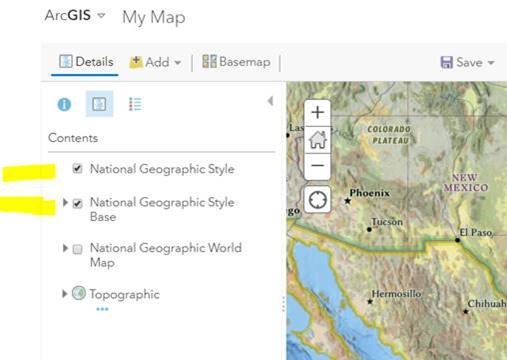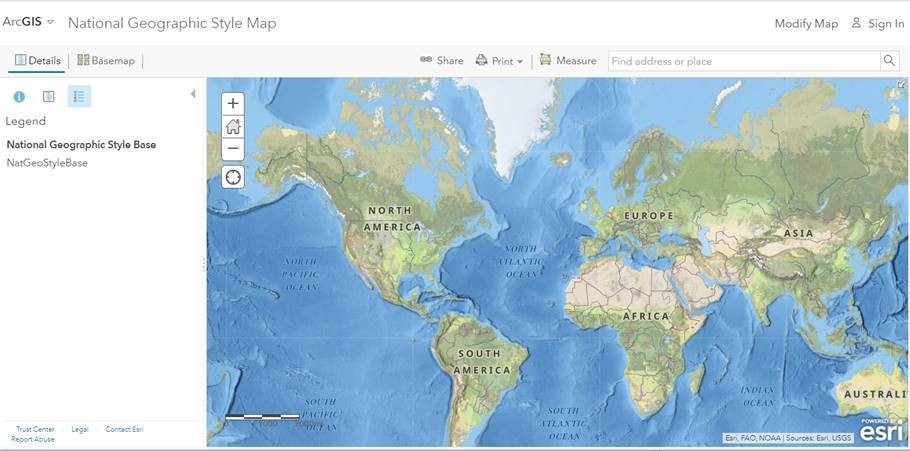- Home
- :
- All Communities
- :
- Industries
- :
- Education
- :
- Education Blog
- :
- Using the new National Geographic style basemap in...
Using the new National Geographic style basemap in education
- Subscribe to RSS Feed
- Mark as New
- Mark as Read
- Bookmark
- Subscribe
- Printer Friendly Page
I highly recommend investigating the amazing and beautiful new National Geographic map in teaching, learning, and beyond. This is one of the rapidly expanding set of vector tile maps available to you, and this one presents different wonders and delights at different scales. At smaller scales, a new cached base layer has been created, the National Geographic Style Base. It blends our multi-directional hillshade with a specially prepared version of the Esri/USGS Ecophysiographic Land Units Map. For more information on the science behind ELUs, see this link. At mid-scales, the ELUs give way to a single tone land color. The hillshade continues into large scale, matching the coverage seen on other basemaps such as Topographic. To find out more about this map, see this essay from my colleague at Esri: https://www.esri.com/arcgis-blog/products/arcgis-living-atlas/mapping/meet-the-national-geographic-s...
To access the map, you have two options:
- Later this year, the National Geographic basemap will be added to the basemaps default gallery. At the moment, in ArcGIS Online or ArcGIS Pro, you need to add both the National Geographic STYLE and the National Geographic Style BASE from the Living Atlas (see graphic below). Note that this map is different from the one that has existed for years in ArcGIS Online (which is the National Geographic World Map).

2. Another option to use it is to open the following map in ArcGIS Online:
https://www.arcgis.com/home/webmap/viewer.html?webmap=f33a34de3a294590ab48f246e99958c9
This map contains both of the above 2 map items in a combined format, and is shown below.

--Joseph Kerski
You must be a registered user to add a comment. If you've already registered, sign in. Otherwise, register and sign in.
-
Administration
80 -
Announcements
80 -
Career & Tech Ed
1 -
Curriculum-Learning Resources
259 -
Education Facilities
24 -
Events
72 -
GeoInquiries
1 -
Higher Education
598 -
Informal Education
281 -
Licensing Best Practices
93 -
National Geographic MapMaker
33 -
Pedagogy and Education Theory
226 -
Schools (K - 12)
282 -
Schools (K-12)
273 -
Spatial data
35 -
STEM
3 -
Students - Higher Education
246 -
Students - K-12 Schools
129 -
Success Stories
36 -
TeacherDesk
1 -
Tech Tips
121
- « Previous
- Next »